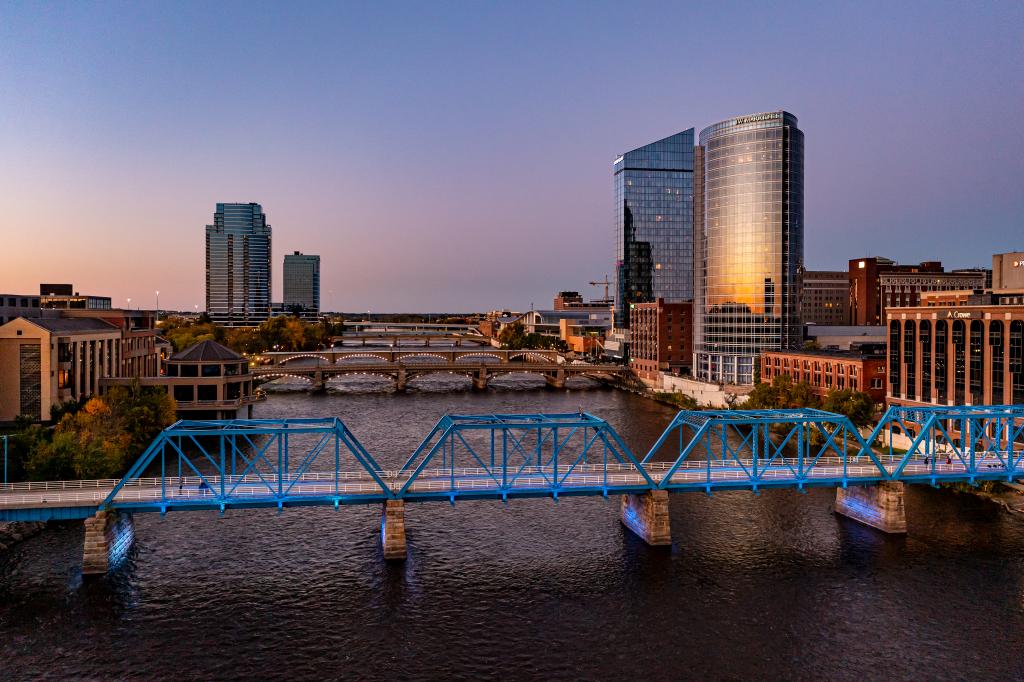
SM22 Highlights
Statistics
In Person Attendees: 787
Virtual Registrants: 42
Exhibitors: 22
Workshops: 28
Commercial Workshops: 9
Sessions: 95
Topical Discussions: 7
Posters: (poster topics 12)
Program Committee Chair: Duane Merrell
Workshop Organizers: Brad Ambrose
Meeting Structure Committee: Jon Anderson, Alice D. Churukian, Elaine Gwinn, Jan Landis Mader, Duane B. Merrell, Adebanjo Oriade, Toni Sauncy, Brad R. Conrad, and Tiffany M. Hayes, Ex Officio
After two years of virtual meetings, physics educators gathered to collaborate and share research in Grand Rapids, Michigan, birthplace of President Gerald R. Ford and home to his Presidential Museum. Attendees had an opportunity to tour the Michigan State University National Superconducting Cyclotron Laboratory. During the meeting NASA released the first photos of space received from the JWST, celebrating the scientific collaboration of scientists around the world.
Also, celebrating collaboration were the participants in the 2022 International Physic Olympiad, hosted by Switzerland and held during the same week. The U.S. Physics Team, sponsored by AAPT and AIP member societies, participated in the virtual competition with high school students from countries around the world.
Physics Education Researchers participated in the post-meeting PER Conference, Queering Physics Education (https://www.compadre.org/per/conferences/2022/).
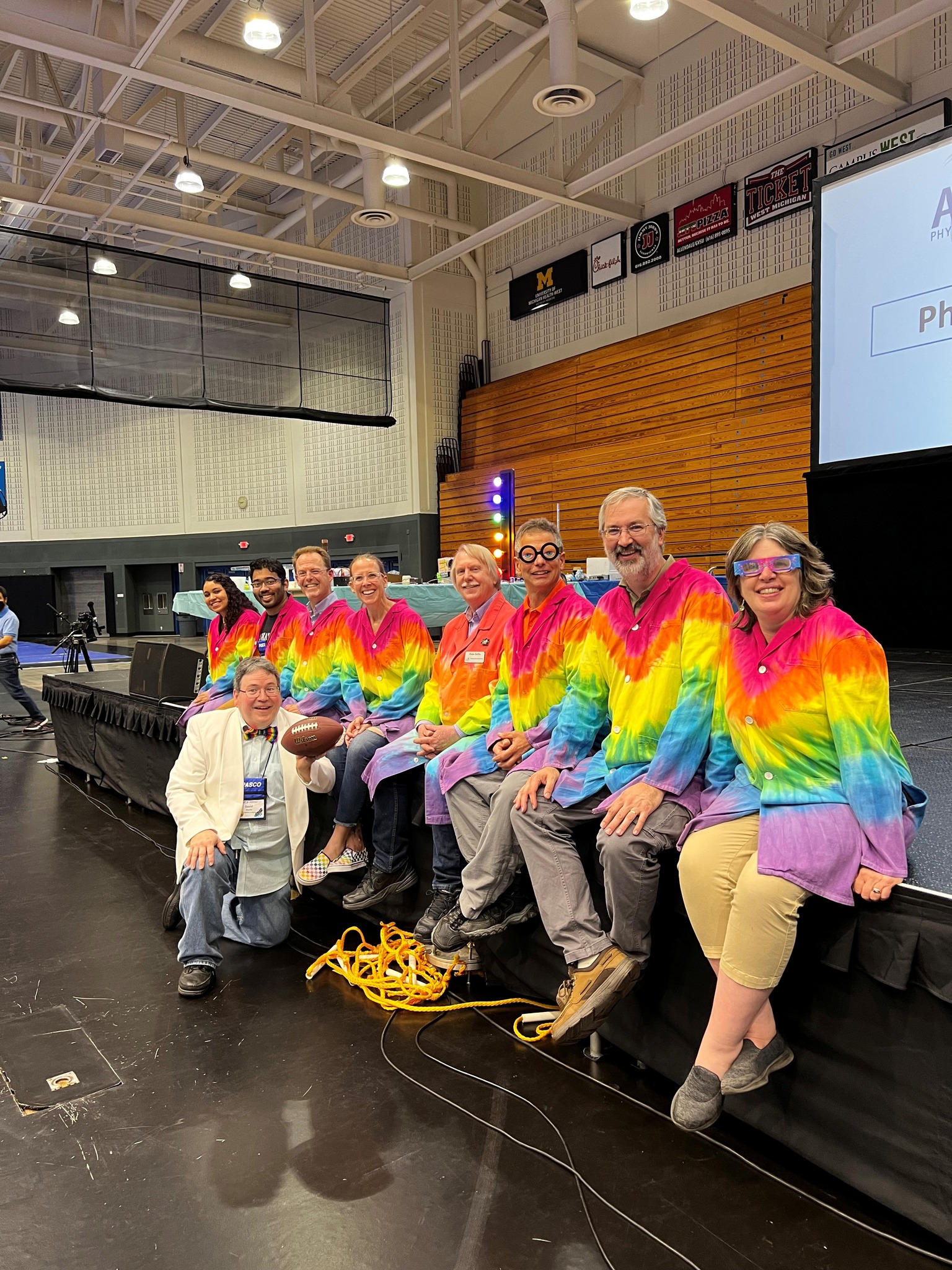
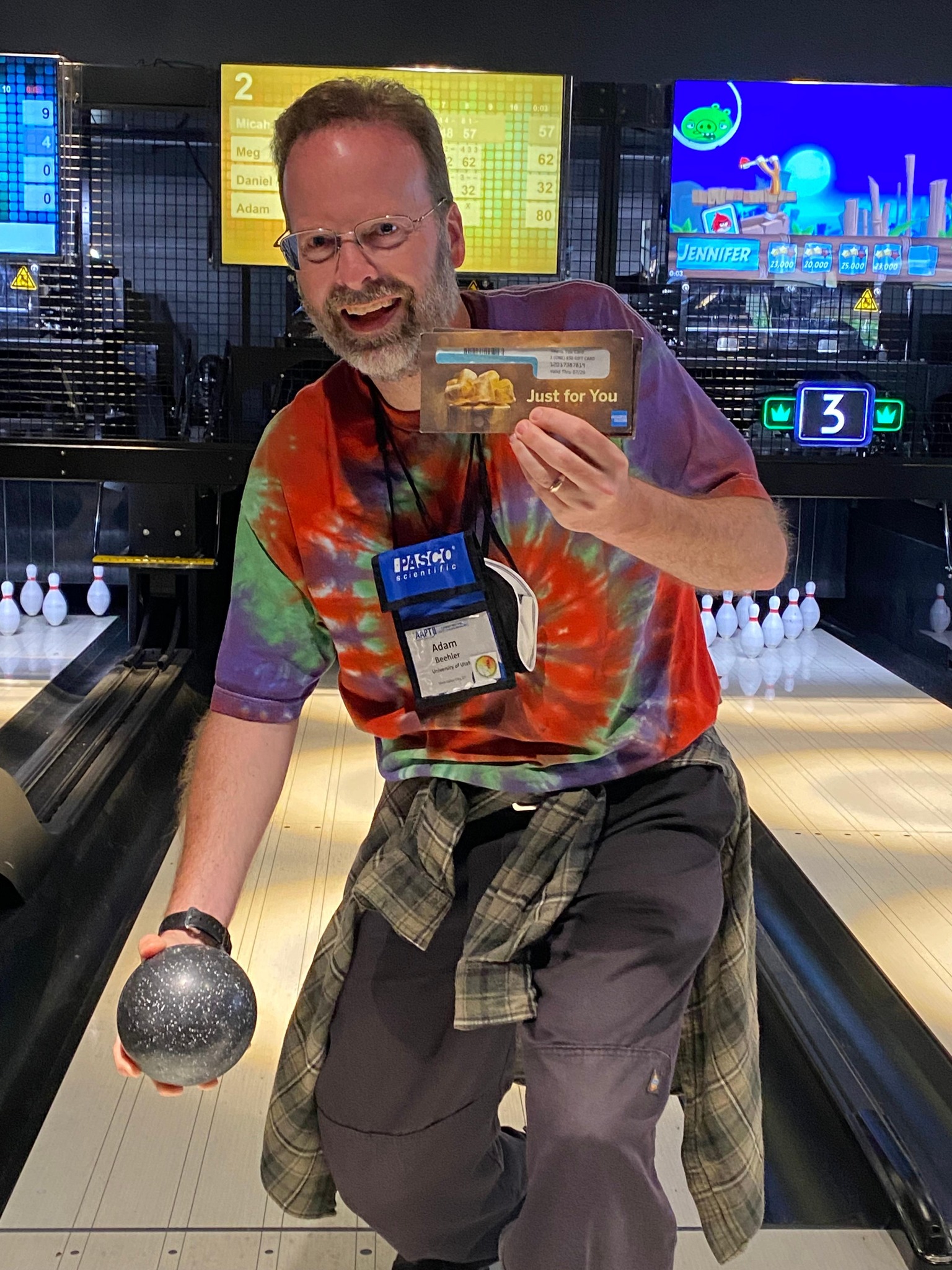
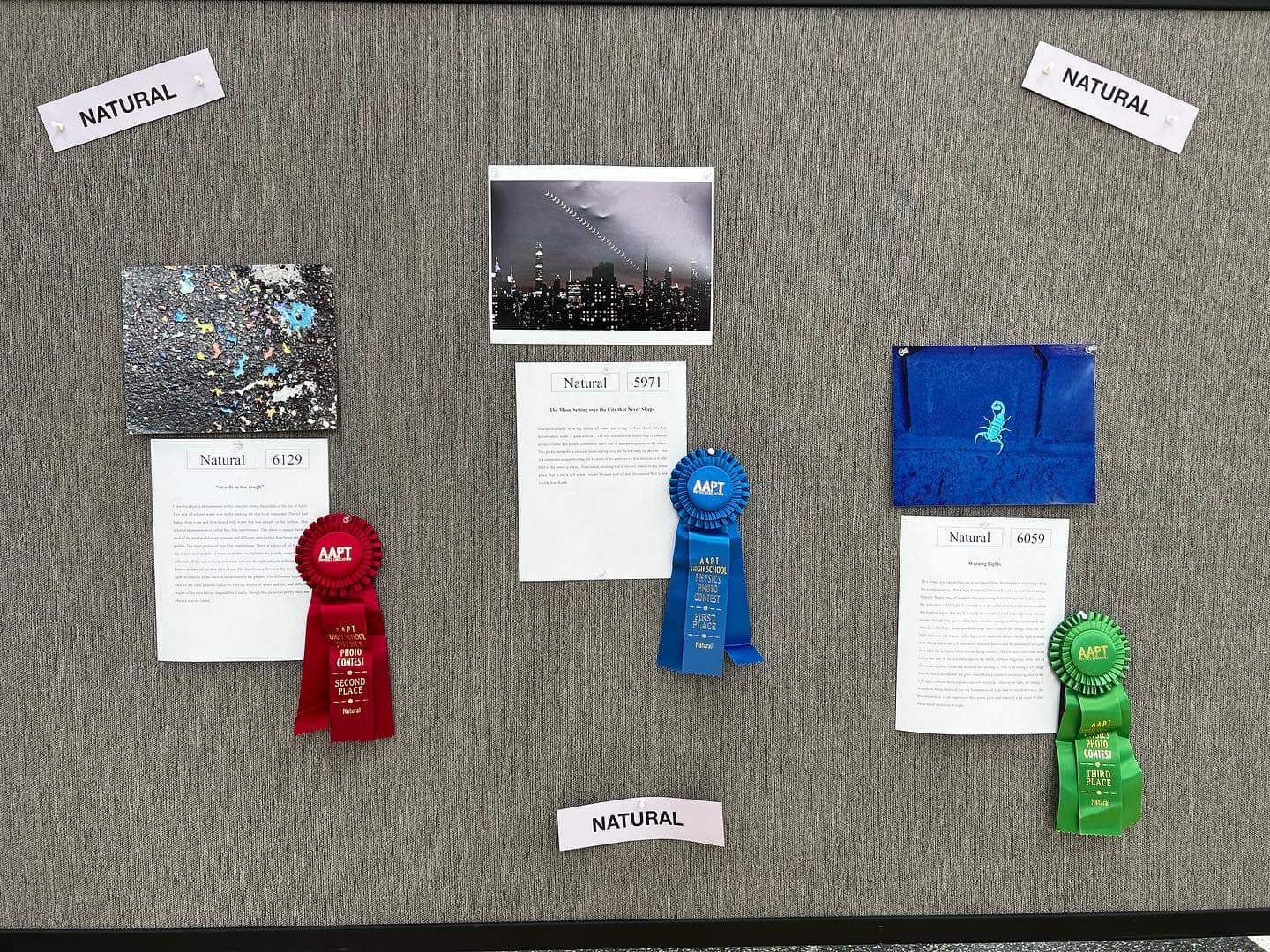
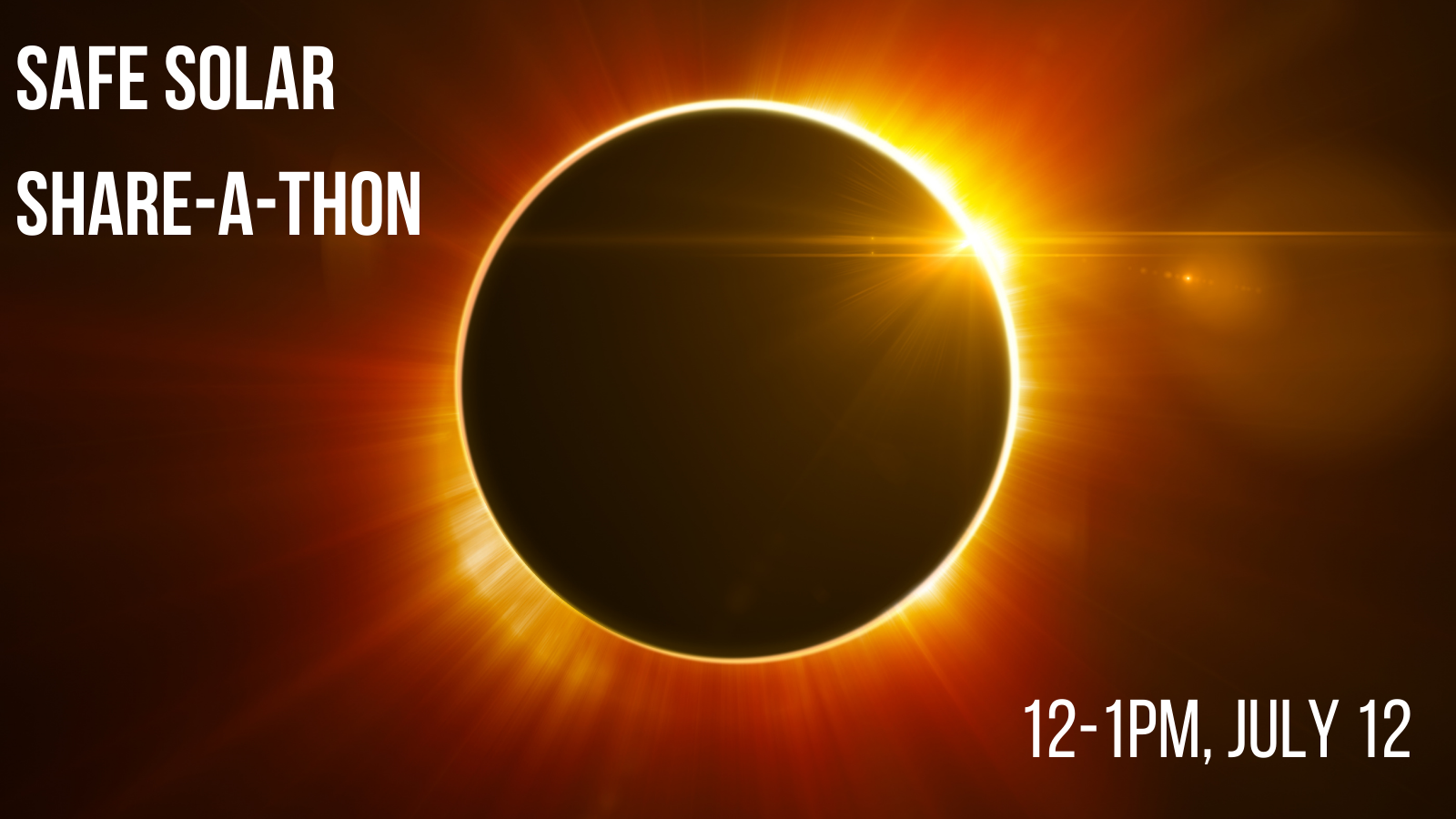
The AAPT Fun Run/Walk, with shirts and refreshemnts provided by Vernier, provided a break from the intense learning format of the meeting. New events this year were the Solar Share-a-Thon, First Timers Luncheon, and Bowling Social.Much anticipated features of the Summer Meeting, The High School Physics Photo Contest, Demo Show, and the Apparatus Competition, are always highlights and this year they were exceptional.
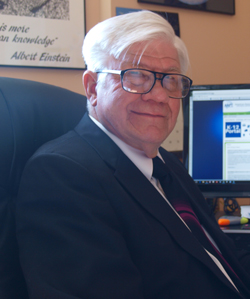

A remembrance session honoring Warren W. Hein and Robert Beck Clark was held at the beginning of the program. Warren W. Hein, former AAPT Executive Officer, passed away on June 11, 2021, while living in Fenton, Michigan. He served as both the Executive Officer (2008-2010) and Associate Executive Officer (1997-2007) of AAPT. Former AAPT President, Robert Beck Clark, passed away at home in Murray, Utah on June 4, 2022. He was was honored as the recipient of both the Oersted (1995) and Melba Newell Phillips (2004) Medals and the Homer L Dodge Citation for Distinguised Service to AAPT. In 2014 he was named an AAPT Fellow. He served as the treasurer (1978-84) and president of the AAPT (1988-89).
Awards
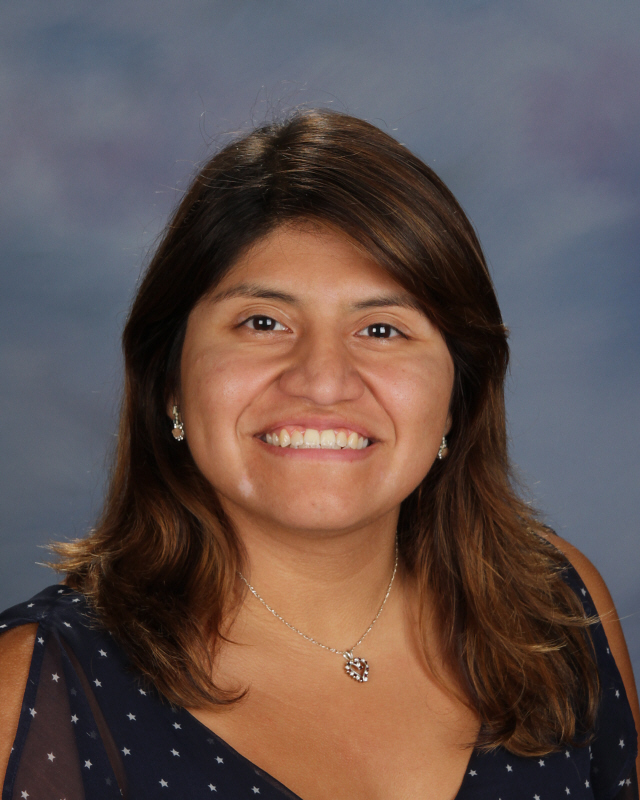 The 2022 recipient of the Doc Brown Futures Award is Debbie Stephanie Andres. The Doc Brown Futures Award recognizes early-career members who demonstrate excellence in their contributions to AAPT and physics education and exhibit the potential to serve in an AAPT leadership role. Her talk, Finding My Physics Teaching Family, focused on the impact her introductory physics professor had on her. She was inspired to think about the difference she could make as a physics educator. This path led to meeting some incredibly motivated and passionate teachers. Familial relationships are important to her and it did not take long before she viewed these colleagues as immediate physics family. As she learned more about AAPT and its membership, she began to view the organization as her extended family. And just like any family, we learn, grow, and work together to be the best versions of ourselves. This talk is a reflection of her experiences through the lens of a high school physics teacher navigating AAPT and the extended physics teaching community.
The 2022 recipient of the Doc Brown Futures Award is Debbie Stephanie Andres. The Doc Brown Futures Award recognizes early-career members who demonstrate excellence in their contributions to AAPT and physics education and exhibit the potential to serve in an AAPT leadership role. Her talk, Finding My Physics Teaching Family, focused on the impact her introductory physics professor had on her. She was inspired to think about the difference she could make as a physics educator. This path led to meeting some incredibly motivated and passionate teachers. Familial relationships are important to her and it did not take long before she viewed these colleagues as immediate physics family. As she learned more about AAPT and its membership, she began to view the organization as her extended family. And just like any family, we learn, grow, and work together to be the best versions of ourselves. This talk is a reflection of her experiences through the lens of a high school physics teacher navigating AAPT and the extended physics teaching community.
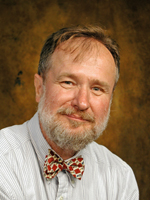 Wolfgang Christian received the Lillian McDermott Medal. This award recognizes those who are passionate and tenacious about improving the teaching and learning of physics and have made intellectually creative contributions in this area. Christian has had a huge impact on the physics education community and has helped usher in computational physics in high school, undergraduate, and graduate education around the country and the world. In his talk, The Promise and Impact of Computation for Teaching, he addressed the history and dreams of machines to automate computation starting with the abacus in 3000 BC, to the combination of at-your-fingertip computation and the internet. Ir presented a personal history of how computers and the internet have challenged me him and changed how he teaches. He included examples to show that computers can provide a learning experience that utilizes students cognitive, affective, and psychomotor domains of learning.
Wolfgang Christian received the Lillian McDermott Medal. This award recognizes those who are passionate and tenacious about improving the teaching and learning of physics and have made intellectually creative contributions in this area. Christian has had a huge impact on the physics education community and has helped usher in computational physics in high school, undergraduate, and graduate education around the country and the world. In his talk, The Promise and Impact of Computation for Teaching, he addressed the history and dreams of machines to automate computation starting with the abacus in 3000 BC, to the combination of at-your-fingertip computation and the internet. Ir presented a personal history of how computers and the internet have challenged me him and changed how he teaches. He included examples to show that computers can provide a learning experience that utilizes students cognitive, affective, and psychomotor domains of learning.
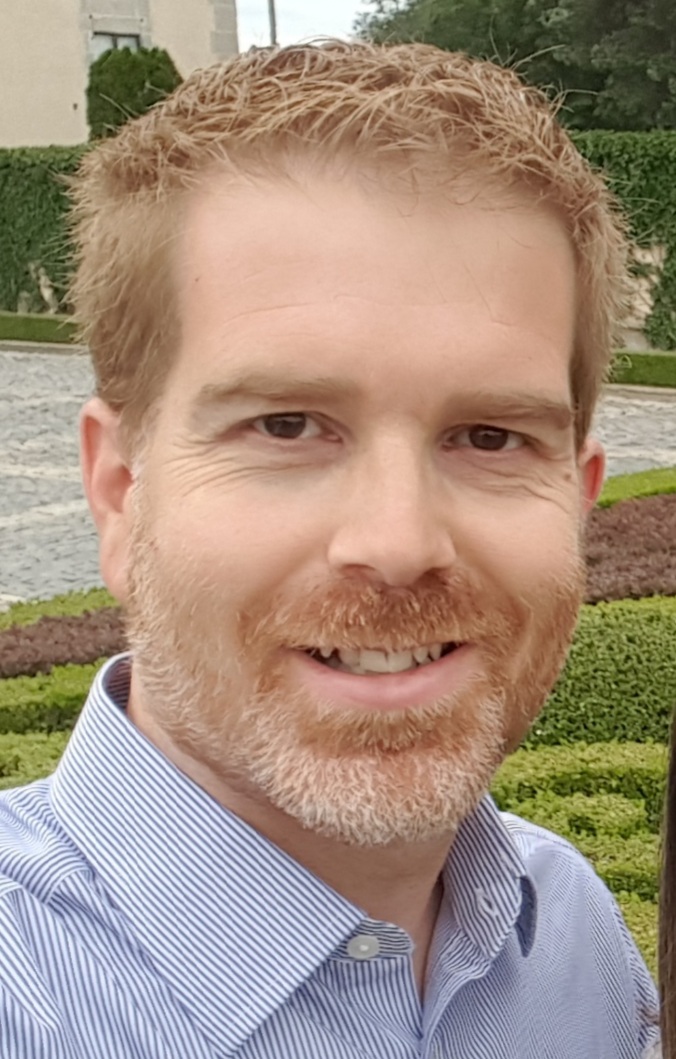 The Halliday and Resnick Award for Excellence in Under Graduate Physics Teaching was presented to Sean J. Bentley. This award is given in recognition of contributions to undergraduate physics teaching and awardees are chosen for their extraordinary accomplishments in communicating the excitement of physics to their students. Associate Professor at Adelphi University’s Department of Physics, Bentley spent two years as Director of the Society of Physics Students (SPS) and Sigma Pi Sigma (the physics honor society), and has been a professor for nearly 19 years. In 2013, Bentley was nominated by his students and recognized by the Adelphi University faculty and administration with the Teaching Excellence Award for Tenured Professors. His talk, Some Pain, Much Gain, shared challenges faced as his department was forced to evaluate alternative educational approaches. Instructional changes always pose difficulties, from overcoming departmental inertia and faculty resistance to building student buy-in and engagement in unfamiliar learning experiences. The proven gains in student learning, though, are well worth the initial pains. He explored a few recent examples of such changes we have implemented in our department, from introductory labs to senior courses, focusing on strategies for overcoming the challenges.
The Halliday and Resnick Award for Excellence in Under Graduate Physics Teaching was presented to Sean J. Bentley. This award is given in recognition of contributions to undergraduate physics teaching and awardees are chosen for their extraordinary accomplishments in communicating the excitement of physics to their students. Associate Professor at Adelphi University’s Department of Physics, Bentley spent two years as Director of the Society of Physics Students (SPS) and Sigma Pi Sigma (the physics honor society), and has been a professor for nearly 19 years. In 2013, Bentley was nominated by his students and recognized by the Adelphi University faculty and administration with the Teaching Excellence Award for Tenured Professors. His talk, Some Pain, Much Gain, shared challenges faced as his department was forced to evaluate alternative educational approaches. Instructional changes always pose difficulties, from overcoming departmental inertia and faculty resistance to building student buy-in and engagement in unfamiliar learning experiences. The proven gains in student learning, though, are well worth the initial pains. He explored a few recent examples of such changes we have implemented in our department, from introductory labs to senior courses, focusing on strategies for overcoming the challenges.
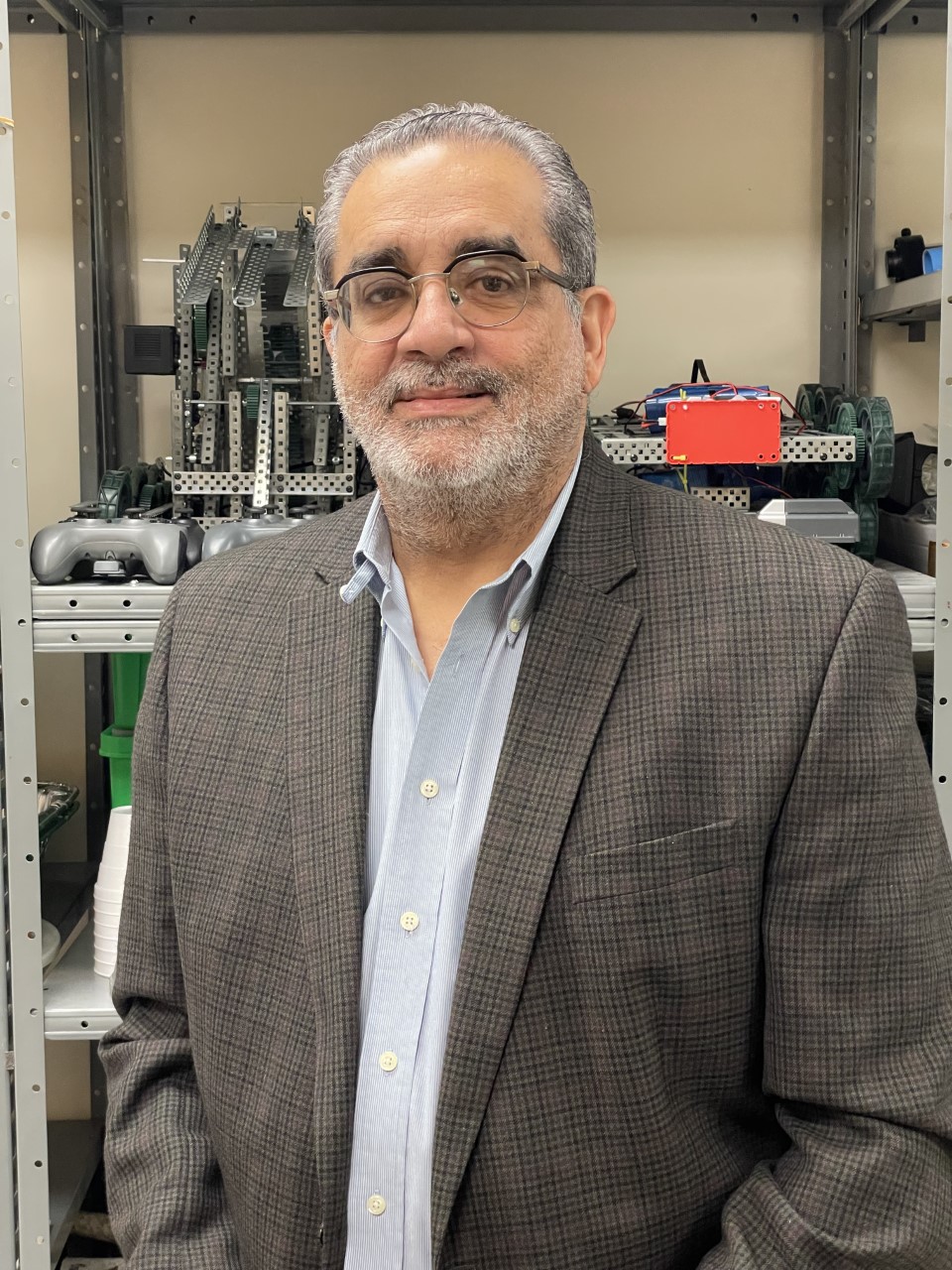 The 2022 Paul Zitzewitz Excellence in K-12 Physics Teaching Award winner was Andres R. Torres, a Physics, and Environmental Management and Research teacher at Ronald Reagan/Doral Senior High School. This award is in recognition for contributions to pre-college physics teaching and awardees are chosen for their extraordinary accomplishments in communicating the excitement of physics to their students. In his talk, Thoughts on Teaching and Motivating Students While Implementing a StepUp for Physics Curriculum, he shared research showing that there has been a massive improvement for women in medicine, business, and law careers over the past few decades (Silva, 2019). After completing a curriculum with interdisciplinary lessons and extracurricular activities, he knew that physics teachers are highly effective in motivating students to show interest in physics principles and applications in their daily lives. But in addition to this, physics teachers could teach lessons to create cultural change and inspire young women to pursue physics in college. STEP UP is a national community of physics teachers that provides valuable lessons, strategies, and professional developments (Step Up Physics Together, n.d.). Implementing the STEP UP curriculum in his classes and creating STEP UP for the physics club were successfully inspirational in motivating underrepresented students to pursue Physics and STEM careers.
The 2022 Paul Zitzewitz Excellence in K-12 Physics Teaching Award winner was Andres R. Torres, a Physics, and Environmental Management and Research teacher at Ronald Reagan/Doral Senior High School. This award is in recognition for contributions to pre-college physics teaching and awardees are chosen for their extraordinary accomplishments in communicating the excitement of physics to their students. In his talk, Thoughts on Teaching and Motivating Students While Implementing a StepUp for Physics Curriculum, he shared research showing that there has been a massive improvement for women in medicine, business, and law careers over the past few decades (Silva, 2019). After completing a curriculum with interdisciplinary lessons and extracurricular activities, he knew that physics teachers are highly effective in motivating students to show interest in physics principles and applications in their daily lives. But in addition to this, physics teachers could teach lessons to create cultural change and inspire young women to pursue physics in college. STEP UP is a national community of physics teachers that provides valuable lessons, strategies, and professional developments (Step Up Physics Together, n.d.). Implementing the STEP UP curriculum in his classes and creating STEP UP for the physics club were successfully inspirational in motivating underrepresented students to pursue Physics and STEM careers.
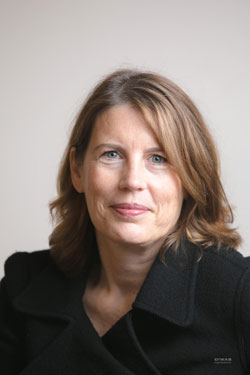 The Summer 2022 recipient of the Homer L. Dodge Citations for Distinguished Service to AAPT was Paula Heron, a Professor of Physics at the University of Washington, Seattle, WA.
The Summer 2022 recipient of the Homer L. Dodge Citations for Distinguished Service to AAPT was Paula Heron, a Professor of Physics at the University of Washington, Seattle, WA.
2022 AAPT Fellows, Geraldine Cochran, Rutgers University, Piscataway, NJ; Laura McCullough, University of Wisconsin-Stout, Menomonie, WI; and Arlisa Richardson, Chandler Gilbert Community College, Gilbert, AZ were also recognized.
Plenaries
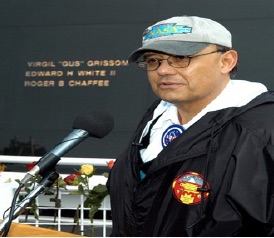 The first plenary session featured Ed Galindo, (Yaqui, American Indian) is a faculty member at the University of Idaho, Associate Director for Education and Diversity for the NASA Idaho Space Grant Consortium, Affiliate faculty member at Idaho State University (Biology Department) and Affiliate faculty member at Utah State University (Physics Department). He has extensive education and research in working with Native American students. While serving as chairman of the science department on the Shoshone-Bannock Indian Reservation, he was twice elected as the National Indian Teacher of the Year, awarded by the National Indian School Board Association. He is serving as a board member with the Barry M Goldwater Scholarship and Excellence in Education Foundation. Most recently, Ed was honored to be inducted as a lifetime (Sequoyah Fellow) member of the American Indian Science and Engineering Society (AISES) for research and educational outreach in the American Indian communities.
The first plenary session featured Ed Galindo, (Yaqui, American Indian) is a faculty member at the University of Idaho, Associate Director for Education and Diversity for the NASA Idaho Space Grant Consortium, Affiliate faculty member at Idaho State University (Biology Department) and Affiliate faculty member at Utah State University (Physics Department). He has extensive education and research in working with Native American students. While serving as chairman of the science department on the Shoshone-Bannock Indian Reservation, he was twice elected as the National Indian Teacher of the Year, awarded by the National Indian School Board Association. He is serving as a board member with the Barry M Goldwater Scholarship and Excellence in Education Foundation. Most recently, Ed was honored to be inducted as a lifetime (Sequoyah Fellow) member of the American Indian Science and Engineering Society (AISES) for research and educational outreach in the American Indian communities.
In his talk, Seeing Out of Both Eyes, Galindo define inclusion as one of acceptance. An acceptance of at a minimum, of at least a fair “listening too”. This would mean a listening to not only other ideas, but listening to other people’s point of view on all sorts of things including life. Listening to a different culture than yours. Listening to the community where you teach at. Listening to your students. Finally, listening to your heart and understanding what it is telling you. This concept has been talked about and written about by Galindo and others to also mean “two eyed seeing” and he has personally added “two ears listening”. Really listening to others is not as easy as it sounds.
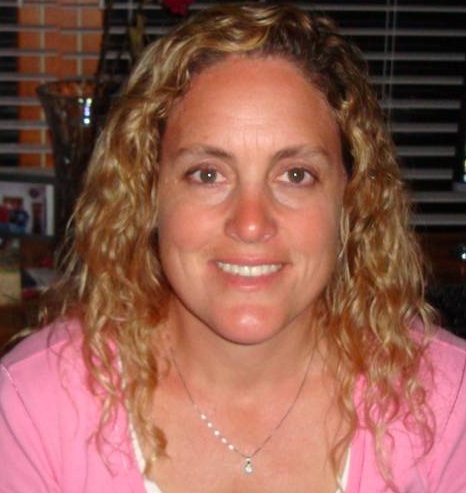 Wendy Adams delivered the second plenary talk, Teaching: The Best Kept Secret. Adams is the Director of Teach@Mines and a Research Professor of Physics at the Colorado School of Mines. Adams is also the PI of the Get the Facts Out Project, a partnership between four national societies that aims to repair the reputation of the teaching profession. A Physics Education Researcher by training, she earned her PhD. from the University of Colorado, Boulder. Adams’ research focuses on instrument development, curriculum design, and perceptions of the teaching profession. She is the author of the CLASS, which measures students’ perceptions of physics and how to learn physics; has done extensive work on problem solving evaluation; developed the interface design guidelines for the PhET Interactive Simulations; designed and developed several curricula including the Explore Sound project - K-14 materials for acoustics; and has most recently developed the suite of Get the Facts Out resources including the PTaP and PTaP.HE instruments (Perceptions of Teaching as a Profession) for students and for faculty in Higher Education, respectively. She is an APS Fellow, and co-recipient of the 2018 American Physical Society Excellence in Physics Education Award.
Wendy Adams delivered the second plenary talk, Teaching: The Best Kept Secret. Adams is the Director of Teach@Mines and a Research Professor of Physics at the Colorado School of Mines. Adams is also the PI of the Get the Facts Out Project, a partnership between four national societies that aims to repair the reputation of the teaching profession. A Physics Education Researcher by training, she earned her PhD. from the University of Colorado, Boulder. Adams’ research focuses on instrument development, curriculum design, and perceptions of the teaching profession. She is the author of the CLASS, which measures students’ perceptions of physics and how to learn physics; has done extensive work on problem solving evaluation; developed the interface design guidelines for the PhET Interactive Simulations; designed and developed several curricula including the Explore Sound project - K-14 materials for acoustics; and has most recently developed the suite of Get the Facts Out resources including the PTaP and PTaP.HE instruments (Perceptions of Teaching as a Profession) for students and for faculty in Higher Education, respectively. She is an APS Fellow, and co-recipient of the 2018 American Physical Society Excellence in Physics Education Award.
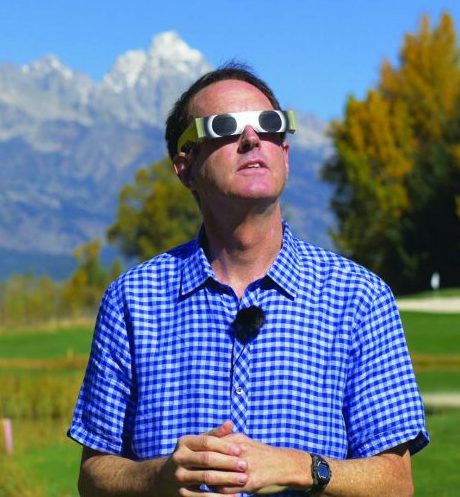 Douglas Duncan talked about future opportunities in his talk, Run A 2023 And 2024 Eclipse Event at Your School, For Fun, Education, And Profit! In Oct. 2023 and April 2024 two spectacular eclipses of the sun will cross the US. Every state will see a partial eclipse, and over 30 million people are in the path of the total eclipse. He encouraged schools and communities to organize safe eclipse watching events. For one eclipse, we got the stands of the football field open for us, and 10,000 people attended! (see the photo) As a veteran of 12 total eclipses since 1970, Dr. Duncan is an expert on eclipse logistics, planning, and science.
Douglas Duncan talked about future opportunities in his talk, Run A 2023 And 2024 Eclipse Event at Your School, For Fun, Education, And Profit! In Oct. 2023 and April 2024 two spectacular eclipses of the sun will cross the US. Every state will see a partial eclipse, and over 30 million people are in the path of the total eclipse. He encouraged schools and communities to organize safe eclipse watching events. For one eclipse, we got the stands of the football field open for us, and 10,000 people attended! (see the photo) As a veteran of 12 total eclipses since 1970, Dr. Duncan is an expert on eclipse logistics, planning, and science.
During this Plenary, David Wirth, physics teacher at Millennium High School in Goodyear, AZ, was recognized as the 2021 PhysTEC Teacher of the Year. Throughout his 29-year career, Wirth has created an environment where students are advocates for science, their communities, themselves, and the world. He champions physics and physics education, and the success of his students is personal to him. His use of Modeling Instruction methods, partnerships with mathematics teachers and grant writing efforts have allowed him to quadruple his physics enrollment and build his students up so they can drive high-level physics discussions and have clear confidence in themselves and their scientific skill.
We thank PASCO for sponsoring the badge holders, Vernier for their support of the 5K Fun Run Walk and Grand Rapids for a warm welcome. Our thanks, also, to Klinger Educational Products for sponsoring the conference bags.


